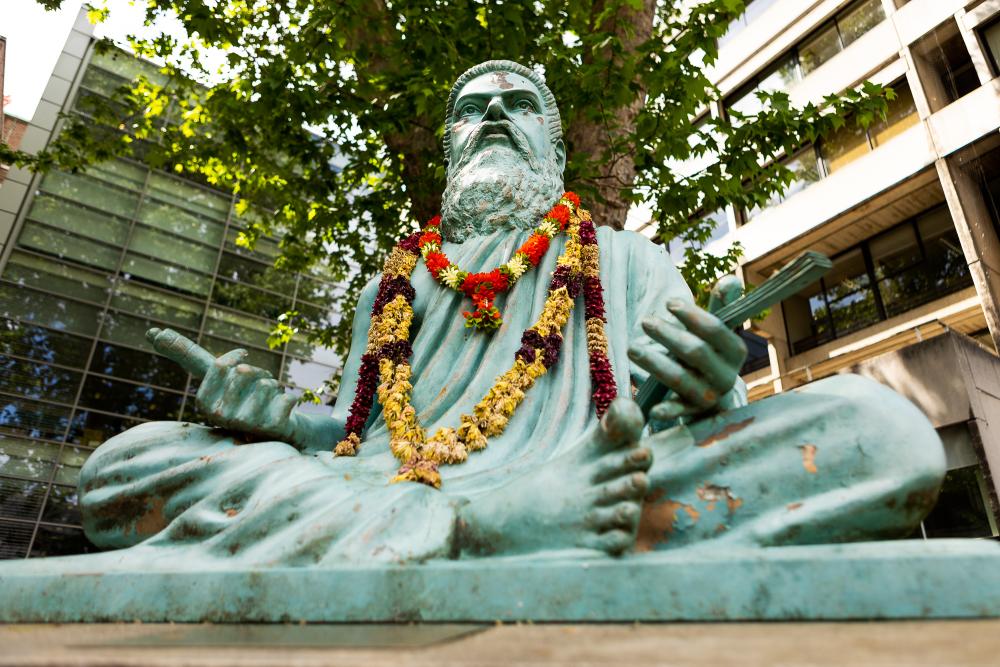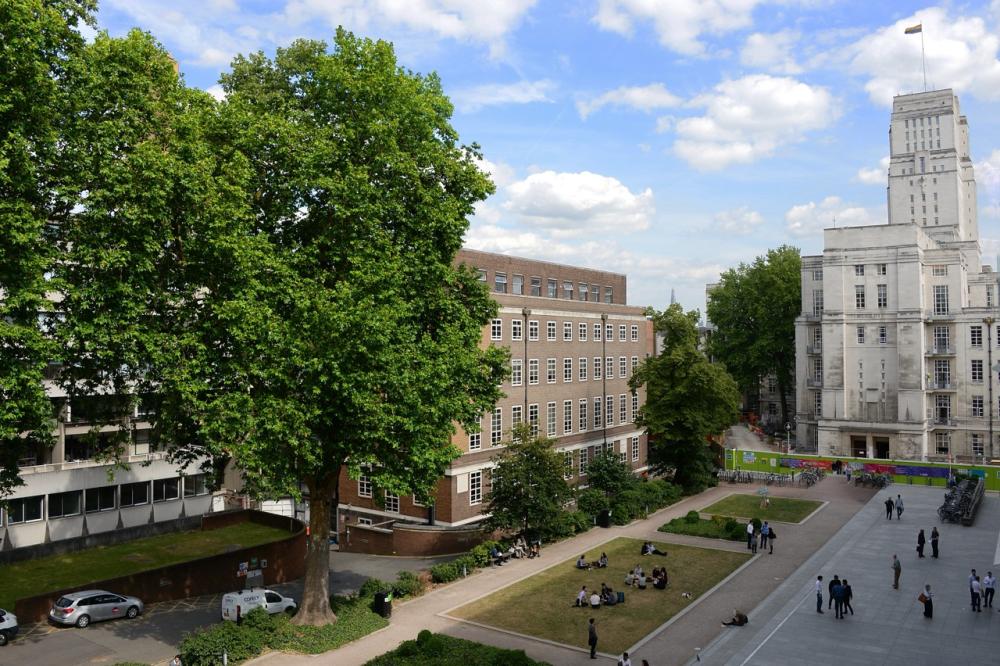What to see at SOAS: A guide to visiting campus


Get to know SOAS University of London with Ankur's guide to the must-see sights on campus, featuring a world-renowned library, a vibrant art gallery, and famous literary spots.
Tucked between the British Museum and Thornaugh Street is a beautiful spot of unique curiosities. Despite its small size, SOAS University of London has much to offer. If you ever find yourself in the area, do spare a moment to have a look at some of these lovely spots around campus.
Thiruvalluvar Statue
At the main entrance to SOAS, on the green outside the main building, you shall see a bronze statue now turned green by natural patination. This is the classical Tamil poet Thiruvalluvar. The statue was originally donated to SOAS by the Government of Tamil Nadu and unveiled by His Excellency Dr L. M. Singhvi, High Commissioner for India in the UK, in 1996.
Thiruvalluvar is best known for his composition Thirukkural, and to leave you with a thought from him, now embossed on a brass plate outside SOAS:
"You met with joy, with pleasant thought you part;
Such is the learned scholar’s art."
Brunei Gallery
Brunei Gallery opened in 1996, and since then, it has hosted around 200 exhibitions. The Gallery puts on about twelve exhibitions a year and presents and promotes artists from the regions of Asia, the Middle East, and Africa, offering a resource to students, academics and the public.
Alongside exhibitions, 500 artworks and objects are in the collection, growing every year. It is open to the students and the public from Tuesday to Saturday.
The SOAS Library
One of the 35 national research libraries of the UK and one of the most important collections in the world on the subject matter of Asia, Africa and the Middle East, SOAS library is a masterpiece of brutalist architecture. Designed by Sir Denys Lasdun and a Grade II building, it was opened in October 1973.
SOAS Library is the custodian of some unique, priceless and extraordinary collections with over 1.5 million resources. However, what makes it truly amusing is the naming of its floors, wherein the topmost floor housing the South Asian collection is referred to as Floor A, and the lowermost floor that houses the special collections is referred to as Floor F.
Senate House (Paul Webley Wing)
The Paul Webley wing houses some of the administrative units of SOAS. But its atrium is home to The World’s Kitchen, with its rather unique and diverse lunch menu and a favourite with the students.
The august interiors of the Senate House are inspired by ancient Egyptian architecture, and in it can be heard the echoes of the temples of Ra and Karnak and Luxor.
Another literary titbit is that during the war, George Orwell’s wife worked at the Senate House as they lived about ten minutes from SOAS, by Coram’s fields, where I currently live (in fact, in direct line of sight from my window!). It was the impressive heights of this august and towering edifice that inspired the Ministry of Truth in his magnum opus 1984.
Visit literary spots around SOAS
Other than the Ministry of Truth / Senate House, there are several other hidden literary spots around SOAS. For instance, the first floor of SOAS College Buildings has a marble plaque in Edward FitzGerald’s name, who translated Omar Khayyam’s Rubaiyat from Persian, the most quoted book of poetry in the English language.
Across the road stands the Faber Building with red doors: Here lived T.S. Eliot while he was the editor of Faber and Faber. And, of course, as the old saying goes, you cannot have a stroll in Bloomsbury without stumbling upon Virginia Woolf once or twice. There are several plaques in the area commemorating her houses and her haunts. Try to spot the one in Russell Square Gardens.
Japanese Rooftop Garden
A perennial joy at SOAS is, of course, the Japanese Rooftop Garden, an immense luxury in central London. The garden was built during the Japan 2001 celebrations and was officially opened by the sponsor, Mr Haruhisa Handa (Toshu Fukami), an Honorary Fellow of the School, in November 2001. It provides a place for contemplation and meditation. It is dedicated to Forgiveness, which is the meaning of the Kanji character engraved on the garden’s granite water basin.
Discover more on campus by attending an open day or joining a campus tour, which runs weekly during term time.
About the author
Ankur Desval Fehrani is studying for a Master’s degree in Iranian Studies and Intensive Persian at SOAS. He loves learning new languages (and old ones, too. Actually, mostly the old ones), travelling, hiking, city-walking and whatever other joys and delights the world has to offer.





